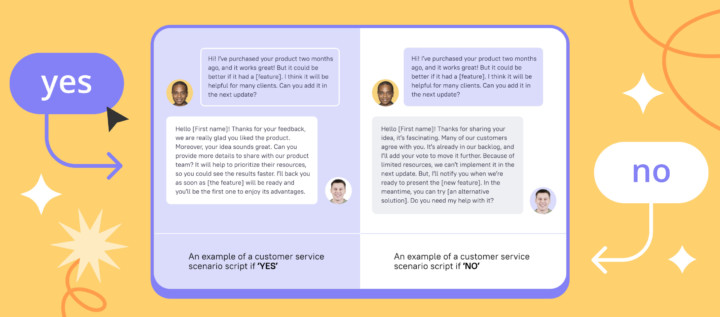Understanding Churn Rate: An in-depth tutorial on calculation and implications

Introduction
Understanding churn rate is essential for businesses striving to maintain a competitive edge in today’s marketplace. This critical metric, which measures the percentage of customers who discontinue using a product or service over a specific period, serves as an indicator of customer satisfaction and overall business health.
With varying impacts across industries — ranging from the financial services sector’s robust retention rates to the challenges faced by ecommerce brands — companies must grasp the nuances of churn to implement effective retention strategies.
By delving into the calculation of churn rate, its implications on growth, and best practices for reduction, organizations can better navigate the complexities of customer retention and foster long-term success.
Defining Churn Rate: Understanding the basics
Churn rate is more than just a number; it’s a lifeline for subscription-based businesses. It tells you how many customers are jumping ship within a set period, whether that’s monthly or yearly. If your churn rate is high, it’s a flashing red light that something is off. You need to dig deep and figure out what’s going wrong.
Here’s the kicker: when customers feel they’re getting value from your service, they’re 82% more likely to stick around for another round. This isn’t just a nice statistic; it’s a clear message. Customer satisfaction is directly tied to retention. Look at the financial services sector — banks and insurance companies boast an average loyalty rate of 78%. That’s a solid foundation for revenue, as long as they manage turnover effectively.
Now, flip the coin and check out ecommerce. Brands in this space are only seeing an average loyalty level of 30%. That’s a tough environment. Keeping customers engaged is like trying to catch smoke with your bare hands.
Here’s another reality check: only 1 in 26 unhappy customers will actually voice their complaints. The rest? They just walk away without a word. That’s why proactive customer feedback is essential. Companies need to understand and analyze their churn rate. It’s not just a metric; it’s a critical tool for tackling retention challenges. If you get a handle on this, you’re on your way to long-term success and stability.

How to calculate Churn Rate: Formulas and examples
To get a grip on churn rate, you need a simple formula:
Churn Rate = (Customers Lost During Period) / (Total Customers at Start of Period) × 100.
Let’s break it down with a real-world example. If you kick off the month with 200 customers and lose 10 by the end, your churn rate looks like this:
Churn Rate = (10 / 200) × 100 = 5%.
That’s a 5% turnover for the month. Knowing how to calculate this isn’t just a numbers game; it’s essential for any business serious about tracking churn and improving customer retention over time.
Take a look at the organic payment apps sector. They see a 30-day drop-off rate of 10%. That’s a wake-up call. You can’t afford to ignore these metrics.
Now, consider the computer software industry. They typically see a turnover of 14%. Why? Because competition is fierce, and market dynamics are always shifting. Companies like ZoomInfo show us that when you focus on user experience, you can significantly lower your turnover. It’s all about having a solid customer loyalty strategy.
Let’s talk numbers again. Paid installation apps show a Day 1 engagement of 14% and a Day 30 engagement of 11%. Those early interactions are crucial for keeping users around. Sabrina Tessitore, Content Marketing Manager at CustomerGauge, puts it bluntly: “B2B companies need to implement strategies that generate ROI through effective NPS programs.” This underscores the importance of client feedback in cutting down churn rates.
Finally, look at the median client turnover. It’s made up of a voluntary percentage of 3.73% and an involuntary percentage of 1.06%. If your total turnover is over 5%, it’s time to double down on retention strategies. Don’t wait—take action now.

The business impact of Churn Rate: Growth and customer retention
Churn rates are like a leaky bucket for your business. If you’re not paying attention, you’ll find your growth trajectory taking a nosedive. Research shows that only 1 in 26 unhappy customers will actually speak up. That means a lot of folks are slipping away without giving you a chance to fix things. This isn’t just about losing revenue today; it’s about the long-term costs of replacing those customers. Every departure ramps up your acquisition expenses, and that’s a hit no business can afford.
Here’s the reality: keeping your current clients is far cheaper than chasing new ones. As we head into 2024, the stakes are even higher. Competition is fierce, and customer expectations are through the roof. Yet, shockingly, 44% of companies don’t even track their client retention rates. That’s a serious oversight, as pointed out in the case study ‘Lack of Measurement in Client Retention.’
When you don’t measure, you risk damaging customer relationships and losing your foothold in the market. Various factors — like pricing, convenience, and product usability — drive voluntary churn, and they vary across industries. Jennifer Clark rightly points out, if your involuntary turnover is climbing, it’s time to put systems in place. Think automatic account updaters to keep payment info current and reduce declined transactions.
By focusing on understanding and managing churn, businesses can build stronger relationships with clients, boost profitability, and ensure they’re in the game for the long haul. Don’t wait for the problem to escalate — take action now.

Strategies to reduce Churn Rate: Best practices for retention
To cut down on churn, businesses need to take a multi-pronged approach. Here’s how you can do it:
Boost customer engagement: Regular communication is key. Think newsletters, feedback surveys, and personalized messages. This isn’t just about staying in touch—it’s about building relationships. Consider this: 85% of people ignore standard payment failure emails. That’s a huge gap. By diversifying your communication methods, you can connect better with your clients, much like how educators create different resources to meet diverse learning styles.
Deliver Exceptional client support: Timely and effective support can make or break your relationship with clients. Voluntary churn happens when a customer decides to leave, often because their issues weren’t addressed. Proactive support is essential here. Don’t wait for problems to escalate; tackle them head-on.
Create loyalty programs: Reward your loyal customers. Incentives can turn satisfied clients into brand advocates. When they feel valued, they’re more likely to stick around and spread the word about your business.
Analyze feedback: Regularly collect and analyze client feedback. This isn’t just a box to check; it’s a vital tool for improvement. By understanding what your clients want, you can adapt and enhance their experience.
Utilize data analytics: Data isn’t just numbers; it’s insight. Use analytics to predict client behavior and identify churn triggers before they become a problem. Companies that excel in this area gain a competitive edge, driving advocacy and referrals.
Develop diverse educational resources: Recognize that clients learn differently. By offering educational materials in various formats, you cater to different preferences and accessibility needs. This aligns with the idea that stellar client success practices can significantly boost loyalty and retention.
In summary, reducing churn is about proactive engagement, exceptional support, and leveraging data. If you can master these areas, you’ll not only keep your clients but turn them into advocates for your brand.

Churn Rate vs. Retention Rate: Understanding key metrics
Churn rate and loyalty metrics are like the pulse of your business. They tell you how your clients are feeling and how your company is performing. The churn rate shows you the percentage of customers you’ve lost over a certain time. On the flip side, the retention rate reveals how many you’ve managed to keep.
Let’s break down the retention rate with a simple formula:
Retention Rate = (Customers at End of Period — Customers Lost) / (Total Customers at Start of Period) × 100.
For instance, if you start with 200 customers and end with 190 — losing 10 in the process — your retention rate looks like this:
Retention Rate = (190 — 10) / 200 × 100 = 95%.
That’s a solid retention rate, but it’s more than just a number. It shows how well you’re keeping your clientele. Here’s the kicker: recent data reveals that 44% of customers expect companies to solve their problems quickly and effectively. This isn’t just a nice-to-have; it’s a necessity. Strong support can directly influence your churn rate and customer loyalty. CallMiner puts it bluntly: “Approximately 44% of clients desire companies to guarantee that service and support teams address their issues effectively and efficiently.”
Now, here’s where it gets concerning. A staggering 44% of businesses aren’t even tracking their client loyalty rates. This is a huge oversight. If you don’t measure it, how can you manage it? Understanding client loyalty is critical for long-term success.
By getting a handle on both churn and retention metrics, you can craft strategies that boost customer satisfaction and streamline your operations. It’s about making informed decisions that drive results. If you want to thrive, pay attention to these numbers — they’re more than just statistics; they’re your roadmap to success.

Conclusion
Understanding churn rate is vital for businesses aiming to thrive in a competitive environment. This article has explored the definition of churn rate, its calculation, and its significant impact on business growth and customer retention. By recognizing that a high churn rate can indicate customer dissatisfaction, organizations are encouraged to proactively address the underlying issues that contribute to customer loss.
Effective strategies for reducing churn have been outlined, emphasizing the importance of:
– Customer engagement
– Exceptional support
– The use of data analytics
Furthermore, differentiating between churn rate and retention rate provides a clearer picture of customer behavior, allowing businesses to track their performance effectively.
Ultimately, prioritizing churn management is not just about minimizing losses; it is about fostering lasting customer relationships that drive long-term success. By implementing best practices and maintaining a focus on customer satisfaction, businesses can not only retain their clientele but also enhance their reputation and profitability in the marketplace.





![La guía definitiva de growth marketing [explicada por un growth hacker]](https://www.dashly.io/blog/wp-content/uploads/2023/04/The-ultimate-guide-to-growth-marketing-explained-by-a-growth-hacker-720x317.png)
